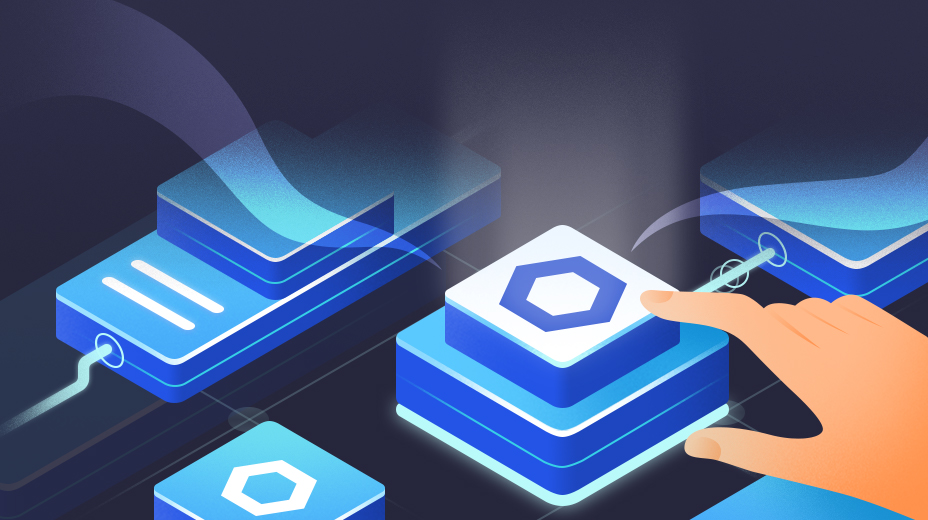ソニックのエコシステムと製品
ここでは、Sonic上で構築されているアプリケーション、ツール、そして開発者の成長する世界を探求します。高速なDeFiやNFTからオンチェーンゲーム、リアルタイムデータアプリまで、このモジュールでは、Sonicのパフォーマンスがユーザーとビルダーの両方に新たな可能性を開く方法を示しています。また、プラットフォームに留まらず、Sonicを単なるプラットフォーム以上にする開発者ツール、助成金プログラム、コミュニティサポートにも注目しています。
ソニックエコシステムの概要
Sonicのコア技術、コンセンサスエンジンからSonicVMやSonicDBまで、パフォーマンスとスケーラビリティに優れていますが、任意のブロックチェーンの真の価値はそのエコシステムにあります。Sonicは単なる高速なLayer-1チェーンだけではありません。開発者、ユーザー、機関、およびサービスプロバイダーが集まり、次世代の分散型アプリケーションを構築する完全なプラットフォームです。
Sonicエコシステムは、Sonicのサブセカンドの確定、EVM互換性、およびFee Monetizationのような経済的インセンティブから利益を得る、DeFiプロトコル、NFTプラットフォーム、ゲームdApps、開発者ツール、およびミドルウェアサービスの組み合わせを反映しています。このエコシステムはまだ初期段階にありますが、助成金、技術支援、成長するコミュニティの採用に支えられて急速に進化しています。
エコシステム設計フィロソフィ
コンポーザビリティは、Sonic上のdAppsがシームレスにお互いに統合できることを意味します - プロトコルは摩擦なくお互いに借りたり、構築したり、または相互作用することができます。これはDeFiにおいて特に重要であり、複雑なプロトコルはリアルタイムで複数のスマートコントラクトと相互作用する能力に依存しています。SonicVMと1ブロックの最終性により、Sonic上のコンポーザビリティは可能だけでなく、高速かつ信頼性があります。
持続可能性は、FeeMなどのインセンティブモデルを通じて対処されており、これにより開発者は自分のアプリケーションの実際の利用に基づいて報酬を受け取ることができます。これにより、生態系の成長が短期的な助成金やハイプサイクルに依存せず、繰り返し、利用に基づいた収益に根ざしていることが保証されます。
Sonic上のDeFiと金融インフラ
金融の新たな基盤
ソニックブロックチェーンは、分散型ファイナンス(DeFi)の中心地となり、高速で低コストなインフラを活用するいくつかの優れたプロトコルを引き付けています。その中でも、Aave、Silo Finance、およびPendleは革新的なアプローチとエコシステムへの重要な貢献で注目されています。
Aave:レンディングマーケットをソニックに拡大
2025年初、先導的な分散型貸出プロトコルであるAaveは、Sonicブロックチェーンにサービスを拡張しました。この戦略的な動きにより、Aaveのバージョン3(V3)機能がSonicに導入され、効率モードやガス最適化機能が提供されました。ユーザーは今や、Sonicネットワーク内でUSDC、WETH、およびwSトークンなどの資産を貸し借りすることができます。この統合は、Sonic Foundationからの1500万ドルの流動性インセンティブと、プラットフォームの採用を促進するためのAaveからの追加の80万ドルによって支援されています。
サイロファイナンス:リスク分離型融資市場
Silo Financeは、ユニークなリスク分離モデルを備えた分散型かつ許可なしの貸出市場を提供しています。Siloは、Sonic上で、ユーザーが幅広い資産を貸し借りすることを可能にし、プロトコル内の他の資産に関連するリスクにさらされることなく行うことができます。この設計により、各貸出市場が分離され、セキュリティが向上し、システムリスクが軽減されます。SiloのSonicとの統合により、ユーザーは効率的な貸出取引を行うためにネットワークの高スループットと低レイテンシを活用することができます。
Pendle: リターントークン化および取引
Pendleは、収量トークン化に特化したプロトコルであり、ユーザーが将来の収益を元本から分離して取引できるようにします。PendleがSonic上に展開することで、ユーザーは収益を生む資産をトークン化し、それらを独立して取引することができ、固定収益や収益管理戦略の機会を提供します。例えば、ユーザーはAaveのaUSDCなどの資産をPendleに預け入れ、それらを元本と収益のコンポーネントに分割し、これらのトークンをSonicの高速かつ費用対効果の高いネットワーク上で取引することができます。
クロスチェーンDeFi
Sonic Gatewayのおかげで、SonicのDeFiプロトコルは、イーサリアムやその他のエコシステムからの流動性を統合することができます。これにより、クロスチェーンのイールド戦略、トークンスワップ、合成資産の作成への扉が開かれ、ユーザーはより柔軟でより深い市場を得ることができます。Sonicは大量のトランザクションを迅速に処理できるため、他のDeFiエコシステムのブリッジハブまたは決済レイヤーとしても機能します。
ソニックエアドロップおよびポイントシステム
その成長とコミュニティ戦略の一環として、Sonicは、今後のエアドロップキャンペーンに関連付けられたポイントシステムを導入しました。このシステムは、Sonicエコシステム内での活動に基づいて、早期のユーザー、開発者、流動性プロバイダーに報酬を与えるよう設計されています。
ユーザーは次の方法でポイントを獲得することができます:
- 検証済みのdAppsとのやり取り
- DeFiプロトコルへの流動性提供
- Sonic Gatewayを介して資産をブリッジする
- テストネットとガバナンス活動に参加する
これらのポイントは後で、ネットワーク成長を積極的に支援するユーザーにとって大きな機会となるSトークンの割り当ての一部または全部と交換できるようになります。
エアドロップイニシアチブは単なるマーケティング手法ではありません。トークンの所有権を分散化し、積極的なユーザーを獲得し、早期の流動性を促進する方法です。報酬を意義ある行動に直接結び付けることで、Sonicは最も積極的な参加者がネットワークの将来の長期的な利害関係者になることを確実にしています。
エコシステムに参加するプロジェクトは、ビルダーがユーザーにボーナスインセンティブを提供し、リアルな価値の蓄積に関連するゲーム化されたDeFi体験を創造することを奨励されています。
NFTsとデジタル所有権
高速で手頃なNFTインフラストラクチャ
NFTは、Sonicの技術アーキテクチャから大きな利益を得ています。イーサリアム上のNFTプラットフォームにおいて、高い発行コストと遅い確認が主要な障害となってきました。Sonicでは、ユーザーは数秒でNFTを発行、取引、転送することができ、わずか数セントで行うことができます。
これにより、ゲームアセット、アートコレクション、メタバースの土地、デジタルチケット、認証などのユースケースに新たな可能性が開かれます。開発者は、Web2プラットフォームの速度とユーザーエクスペリエンスに匹敵しつつ、オンチェーンの所有権と透明性を保持したNFTマーケットプレイスを構築することができます。
クリエイターエンパワーメント
高速なメタデータの更新、一括ミンティング、ダイナミックNFTをサポートするツールを備えたSonicは、クリエイターやアーティストに力を与えます。彼らはリアルタイムでコミュニティと交流し、高額な手数料なしにイベントやドロップを開催し、FeeMを活用して二次販売や活動を直接収益化することができます。
ゲームおよびリアルタイムdApps
ゲームでのソニックアドバンテージ
リアルタイムゲームには低遅延のインフラストラクチャが必要ですが、ほとんどのブロックチェーンはそれを提供することができません。Sonicでは、ゲーム内経済、報酬システム、NFT資産の転送がほぼ即座に行われるため、ゲームdAppsはメインストリームのタイトルから期待されるようなレスポンス性を提供することができます。
SonicVMが数千の同時トランザクションを処理し、SonicDBが低遅延のデータアクセスを確保することで、開発者はパフォーマンスやスケーラビリティを損なうことなく、オンチェーン上で完全なゲーム世界を構築することができます。
統合されたゲーム内収益化
ゲーム開発者もSonicの経済インフラから利益を得ます。ゲーム内での購入、報酬の支払い、NFT取引はすべてFeeMを介して収益化でき、プレイヤーの参加を直接開発者の収益に変えます。これにより、長期的なゲーム開発とコミュニティの成長のための持続可能なループが作成されます。
開発者エコシステムとツール
馴染み深いツールを使って構築する
Sonicをベースに開発する開発者は、成長するツール、SDK、およびドキュメントのライブラリにアクセスできます。EVM互換性を備えているため、彼らはHardhat、Truffle、Foundryなどの人気フレームワークを使用したり、The Graph、Chainlinkなどのサービスと統合したり、他のミドルウェアツールを利用したりすることができます。
オンボーディングはイーサリアムを反映しているため高速ですが、結果は大幅に速く、費用対効果も高くなります。
ソニックランチパッドと補助金
エコシステムの成長を加速するために、SonicはLaunchpadとエコシステムグラントプログラムを提供しています。これらの取り組みは、Sonic上で構築されるプロジェクトに資金、メンターシップ、およびインフラサポートを提供します。DeFiプロトコル、NFTゲーム、またはDAOツールを立ち上げている場合でも、Sonicのグラントシステムは資本だけでなく実用的なサポートを提供します。
コミュニティ、ユーザー、およびパートナー
エコシステムを一緒に育てる
Sonicエコシステムはコミュニティを最優先に考えています。草の根開発者グループからプロのパートナーシップまで、ネットワークは協力を通じて成長しています。オープンなドキュメンテーション、ハッカソン、開発者へのインセンティブ、そして性能の高い分散型テクノロジーへの共通の信念が、Sonicの成長を後押ししています。
インスティテューショナルパートナー、特に高スループットアプリケーション(取引所、フィンテックスタートアップ、AIプラットフォームなど)に興味を持つものは、スケーラブルな決済レイヤーとしてSonicをすでに探索しています。
より多くのビルダーが参入するにつれて、ソニックのエコシステムは、金融商品やゲームだけでなく、アイデンティティ、現実世界の資産、公共インフラのためのツールなど、多様化し続けています。





